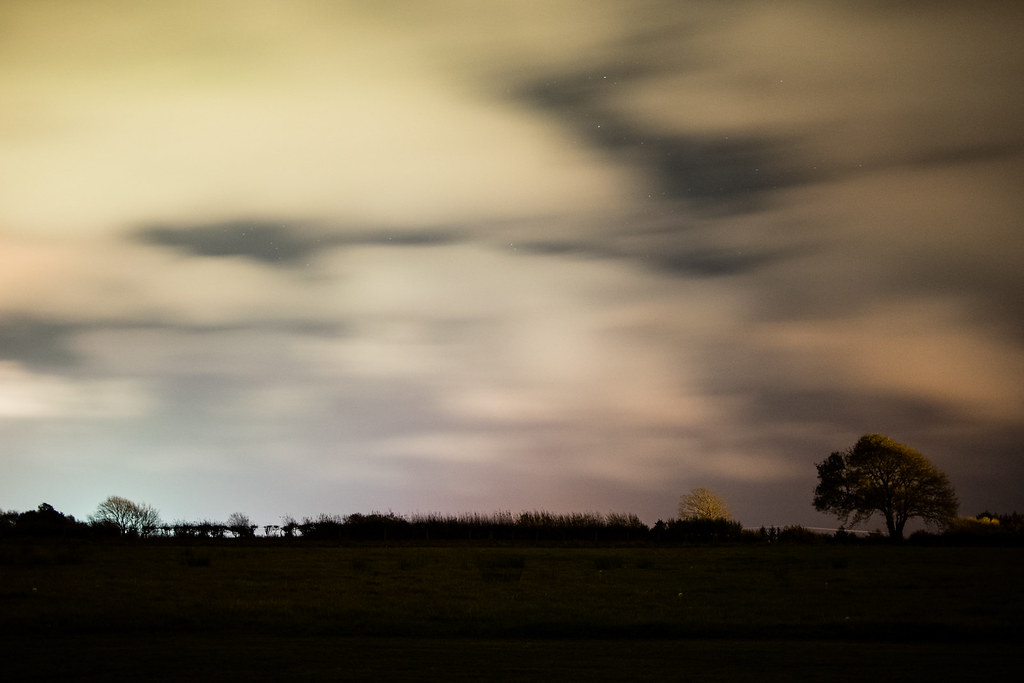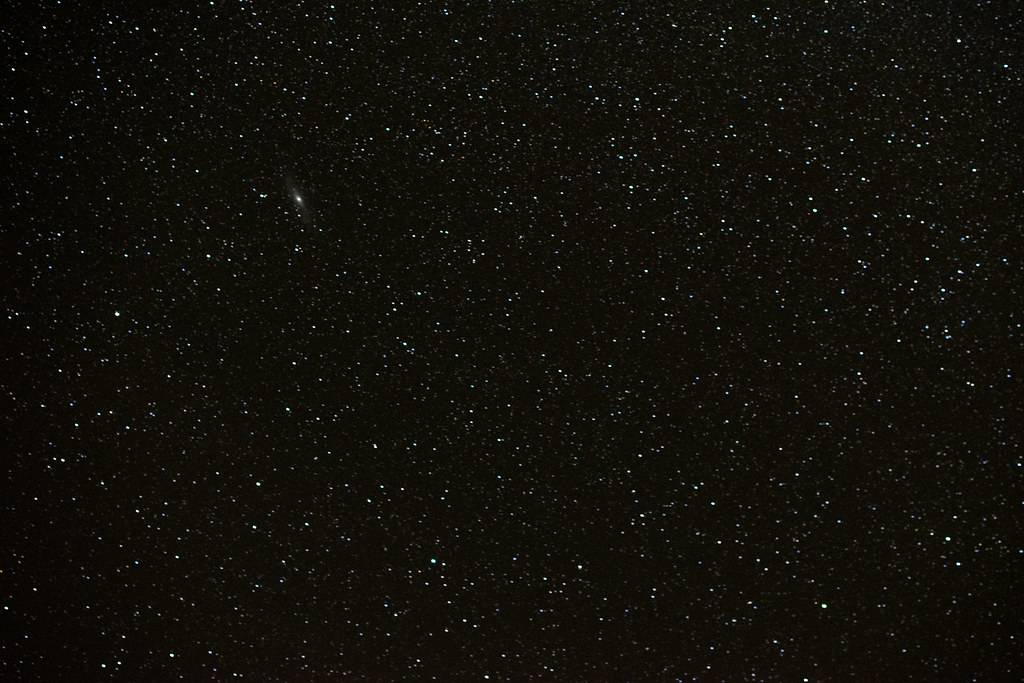There are a few really important factors for night sky photography.
1. Regardless of lens, you NEED a tripod, preferably a really sturdy one that allows you to weigh it down if there is any wind at all, even a light breeze.
2. Remote shutter release and mirror lockup, close viewfinder. The tiniest movements from you pressing a button can introduce blur in your photos, even the slap of the shutter will cause micro vibrations that will effect longer exposures. Use mirror up/lock mode, either connect a cabled shutter release or if your camera has a remote iphone/android app for remote shutter release use that, worst case scenario use mirrorup mode and a 5 second self-timer thats built into most cameras. Lastly close your viewfinder eyepiece "curtain", light can leak onto the sensor this way and create ugly hues.
3. When picking a lens consider the following:
- Aperture is #1, the larger the aperture (lower the f number) the more light the camera can receive through the lens as the aperture is like your iris. 2.8 is good, 1.8 is better, 1.4 is best. The larger aperture lenses allow you to lower your ISO for less noisey images, or increase your shutter speed for less trailing from the stars in the sky giving a sharper looking image.
- Focal length is #2, wider angle lenses in the 10-24mm range not only allows you to get more night sky, or a mixture of sky and landscape, into your image, but the wider you shoot the less the effects of stars trailing will show in your photos, this in turn will allow you to use a longer shutter speed and as such will allow you to lower your ISO making your images less noisey. For example, on my 14-24 2.8 @ 14mm I can keep trailing unnoticeable with a 30sec exposure, but at 24mm its slightly visible.
4. Settings:
Its a real balancing act, between controlling movement/star trailing with shutter-speed, noise from ISO, relative to the aperture available on your camera. I always set F-stop to the lowest it will go to give me the largest aperture (2.8 in my case) and then I will set what I believe to be my cameras maximum acceptable ISO (I hate going above 1600 on my D800), I will then do test shots ~15-30 secs (30 is my upper limit to avoid star trailing) to check exposure and adjust my ISO down if possible. (In a pitch black environment with a D800 and a 14-24 f2.8 I generally find myself somewhere around 800-1600 ISO @ f2.8 with 20-30sec shutter-speed)
5. Dark frames, light frames, bias frames, star stacking. This is advanced stuff, but it can really remove a lot of camera noise and give you very clean detailed photos, I wont explain it here but if you are really into your astro-photography google "Deepskystacker" and read the long detailed FAQ.
So after all that blah blah, what lenses?
Nikon (expensive): 14-24mm 2.8 / 35mm 1.4 / 24mm 1.4
Samyang aka Rokinon (Bang for buck): 14mm 2.8 / 24mm 1.4
Canon/Sony: Ive no idea about these brands, though low F number, and wide angle is hard to go wrong.
Sorry for the wall of text.
Edit: Focusing can be a pain in the ass for sure, what looks fine on the rear of the camera can quickly turn to disappointment at your desktop, I generally focus using live view and manual focusing, taking test shot and zooming right into the image on the LCD to see if ive got the star sharp, your focus will usually be around infinity on your focus ring, half a millimetre adjustment can make all the difference so spend a good bit of time at the beginning of the session to make sure you are certain you've got focus sharp.





 I wish I could walk to somewhere with no light pollution, Means at least a drive and a clear night
I wish I could walk to somewhere with no light pollution, Means at least a drive and a clear night 